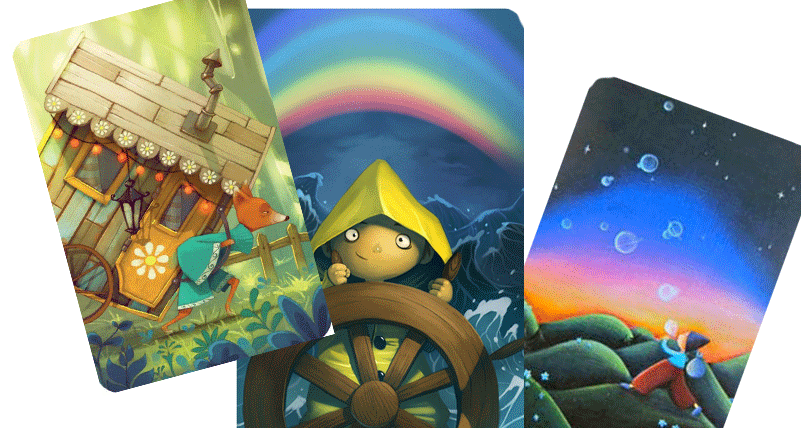
Dixit is reckoned to be one of the best group & family games in recent years. It’s almost but not quite a guessing game with superb artwork.
Ummmm – perhaps players need to fathom, rather than guess. Can you work it out …. work what out?
Well ….

Each player has a set of six cards, which display some delightful and amazing artwork. All the cards are totally different, each carrying a rich and colourful image, with so much to see in every one of them.
And that’s very important.
Going in turns, players choose one card, and provide other competitors with a short clue. (There’s no maximum length to a clue, so some clue givers do tend to go on a bit.) It could be a single word, a descriptive sentence, parts of the words of a song … all manner of things.
It shouldn’t be something so obvious that everybody can see that it’s exactly what the picture’s showing them.
Sometimes a clue comes easily to mind. But sometimes the task throws one’s braincells into turmoil 🤔 making Dixit feel more complex than it actually is.
The clue-giver having done their duty, the other players are faced with what sometimes seems an impossible task: sometimes too easy for words.
They must try to match the given clue with a card from their own six, which they pass unseen to the active player. Once all opponents’ cards have been handed over, the active player mixes them up a bit and puts them on display, with no clue whatever about which is their own: giving each a number for identification purposes.
It’s now up to the others, with no questions or other efforts at getting help, to try to decide which card is the card belonging to the active player. They place a voting tile in front of themselves, face down, with a number indicating what the card’s number is within the display (they may not vote for their own). When they’ve all placed their votes, voting tiles are turned over, and everyone can see who voted for which picture.
The active player now (sometimes with a smirk) reveals which was the ‘target’ picture (theirs), and scores are allocated.
If everybody identifies it, then they all get a score, and the active player gets nothing!
If none at all got it right, the active player once again gets nothing!
So, for the clue giver to score, someone must get it, but not all.
Also, though, players whose pictures were voted for get scores.
It’s a game where win-win happens a lot. A wonderful guessing game, with several expansions.
- minimal learning but ….
- oh – you’ll have to think
- little setting up
- replayable
- learnable by anyone
- everybody is involved all the time
- no luck is involved … creating clues .. simultaneous action

